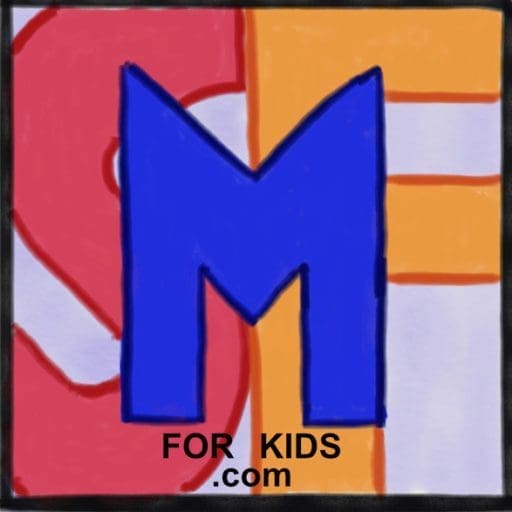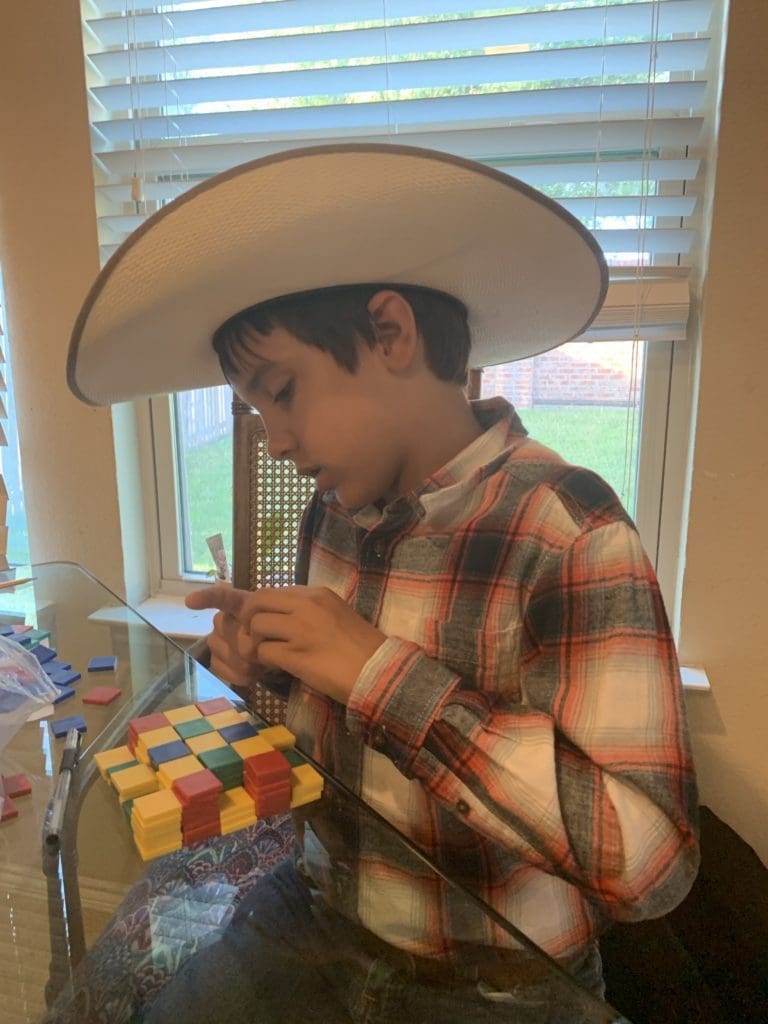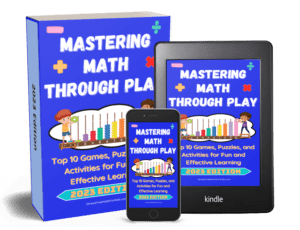In this post I want to give an example from an actual tutoring session of how hands on discovery learning works with an individual student. In particular, this is how a student developed his own understanding of finding volume by applying his understanding of area.
Today I was tutoring a rising 4th grader who needed more practice with multiplication and finding area. We were using square tiles to represent multiplication facts and continue to look for patterns. The student had learned previously that representing multiplication facts with arrays will always form a rectangle. He had also learned that a number times itself forms a square (hence the term square root.) Today I wanted him to also see how the area of the rectangle formed is the product of the array it represents. He would, for example, build a 2 by 2 square, count the squares used, and see that the area is the same as the answer to 2 * 2.
(This student had worked in school with area, so he knew the concept and the formula, but had never worked with the square tiles to see WHY you use square units and WHY you multiply length times width.)
We could then see how we could find the area of composite shapes by separating the shape into different rectangles and squares. Most kids need time to develop understanding of this with hands on square tiles before jumping into dividing the shapes with pencil and paper.
What happened next was impromptu, not part of the planned lesson. However, it is a great example of how playing with math manipulatives leads to natural math learning.
The student asked if he could “make a pattern” with the square tiles. “Sure,” I said. He built a 5 by 5 square from different colored tiles. Next he continued building 5 by 5 squares on top of it until he had a stack of 8 squares. When done, he thought it looked like a stack of pancakes. He decided to add a yellow square “pat of butter” in the middle of the top square.

“I used more than 100 tiles for that!” he said.
“I wonder how you could figure out how many you used without having to count them all,” I responded.
The student counted the squares on the top layer and announced there were 25. He then added that there were 8 stacks of 25. He knew he needed to multiply 25 times 8. We did this by using distributive property mentally- 20 * 8 = 160 + 5*8=40 for a total of 200. (We also talked about how we know there are 4 quarters in a dollar. This means 25 times 4 is 100 and 25 times 8 has to be 200). Finally he then added the “pat of butter”square to the total to get 201.
Next the boy decided he wanted to make a cup of coffee to go with the pancakes.
In this video he explains what he did and the math involved. This was impromptu and unpracticed so you see a true glimpse of his personality and how much fun he was having.
To follow this up I asked if there was a way we could have figured out the number of squares per layer without counting all 25. He knew if it had made a square that it was the same number times itself. Yes, we just needed to count one side length of 5 squares and multiply 5 times 5 to get the 25.
The student already knew the formula for area was length times width but now saw for himself why that was only for a flat 3D shape. To figure out the number of squares in a 3D shape you would also have to include the height! Volume= length * width * height is a 5th grade standard but this child figured it out for himself all while playing and having fun. That is true stress free math!
For extensive resources on teaching volume at 5th/6th grade standards, see my post Teaching Volume of Rectangular Prisms



